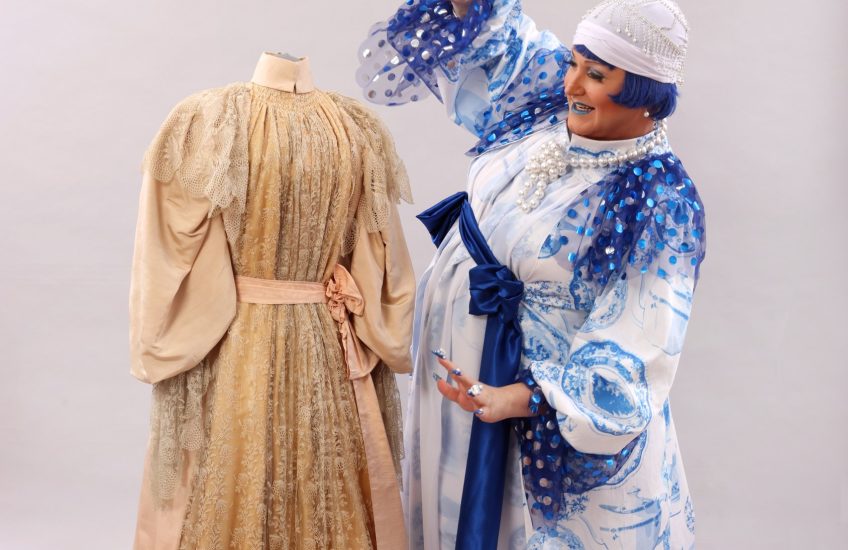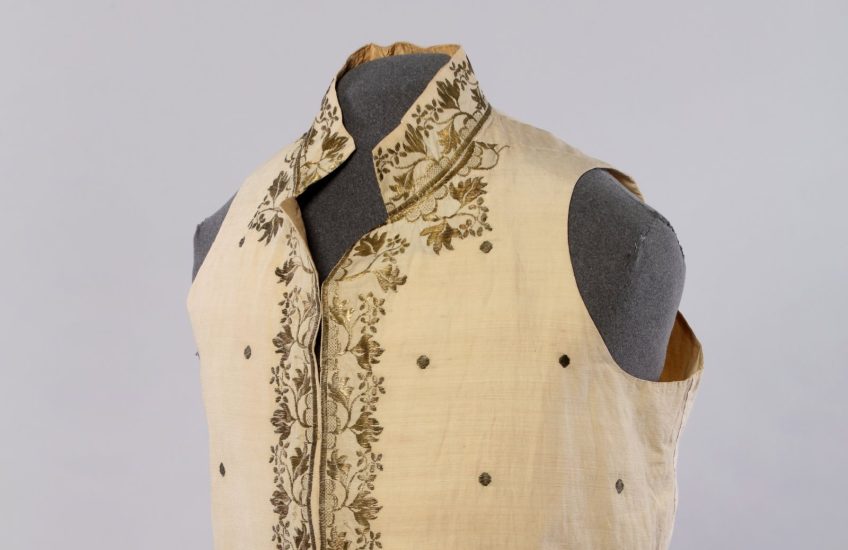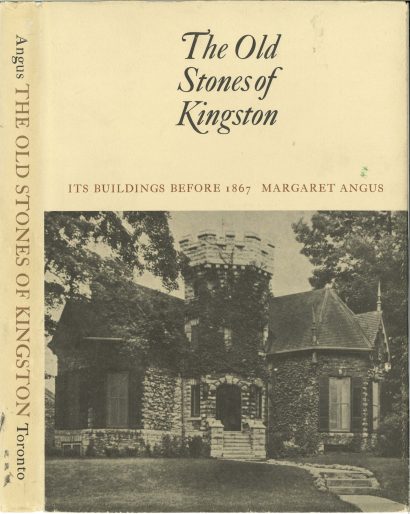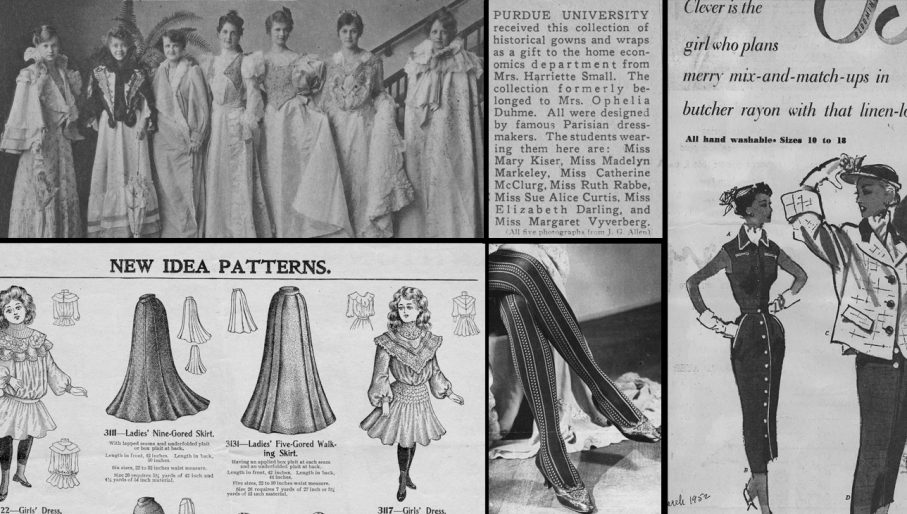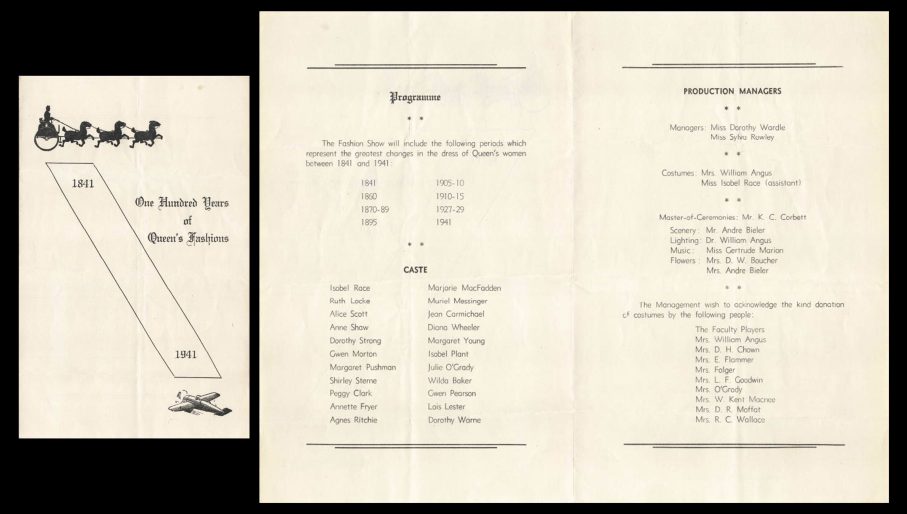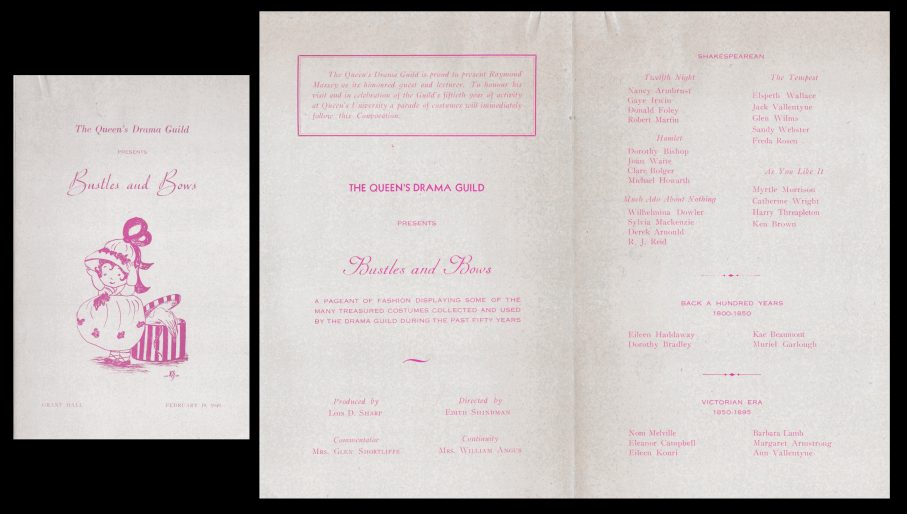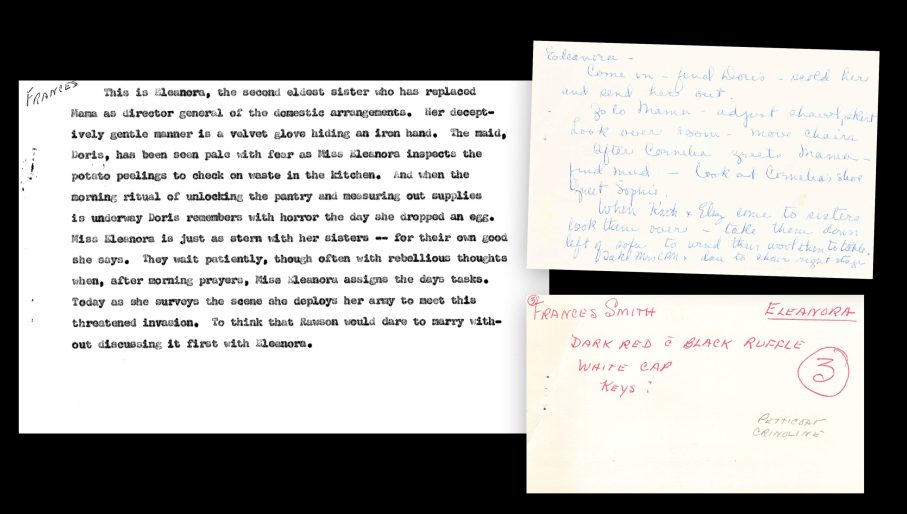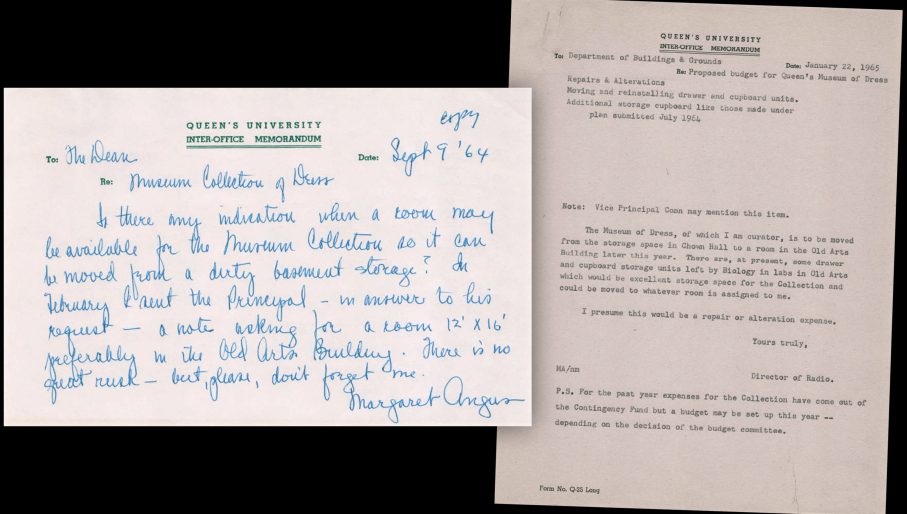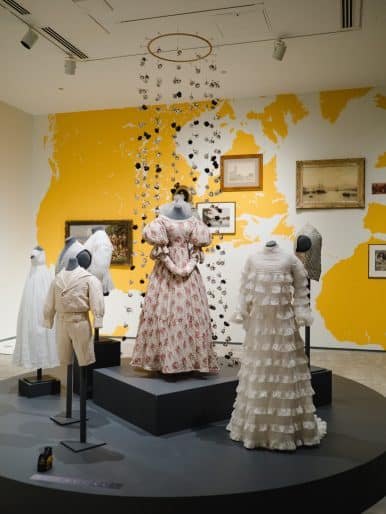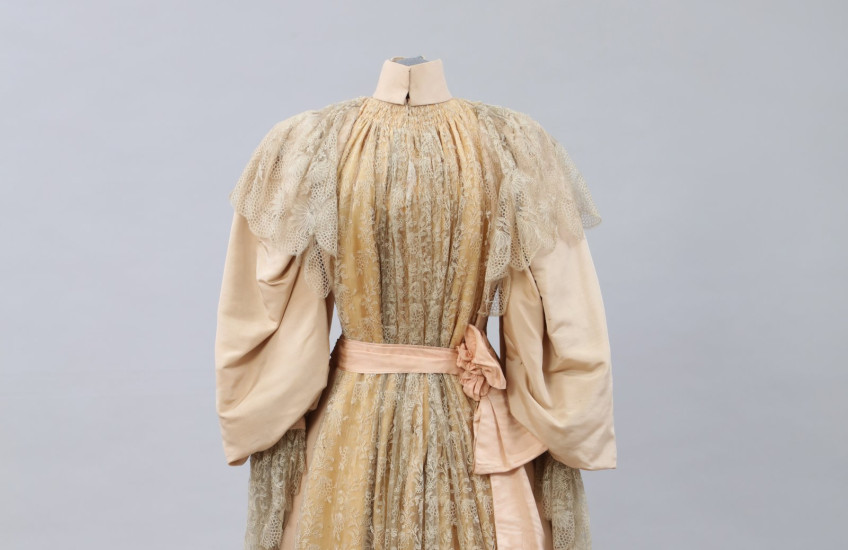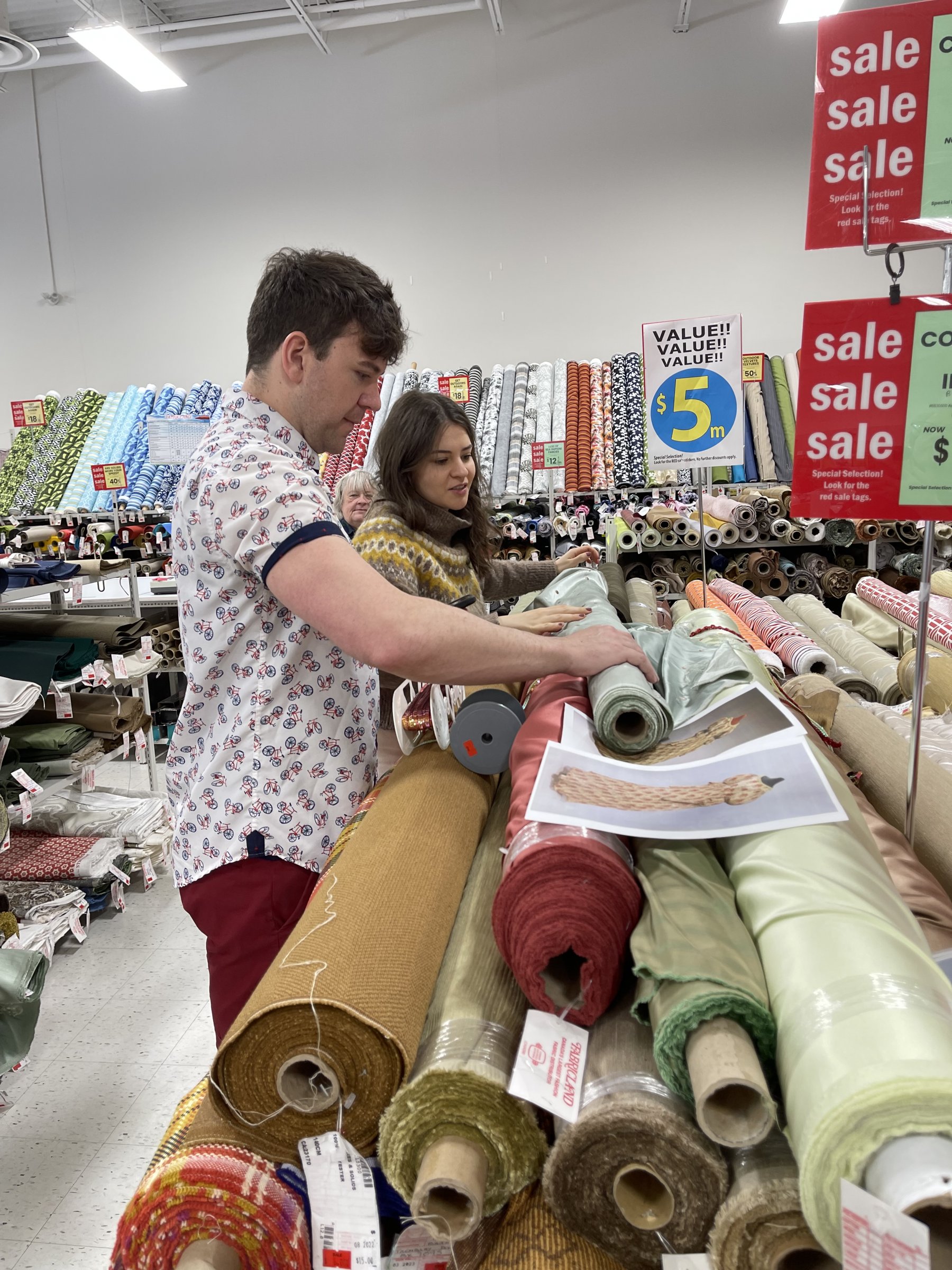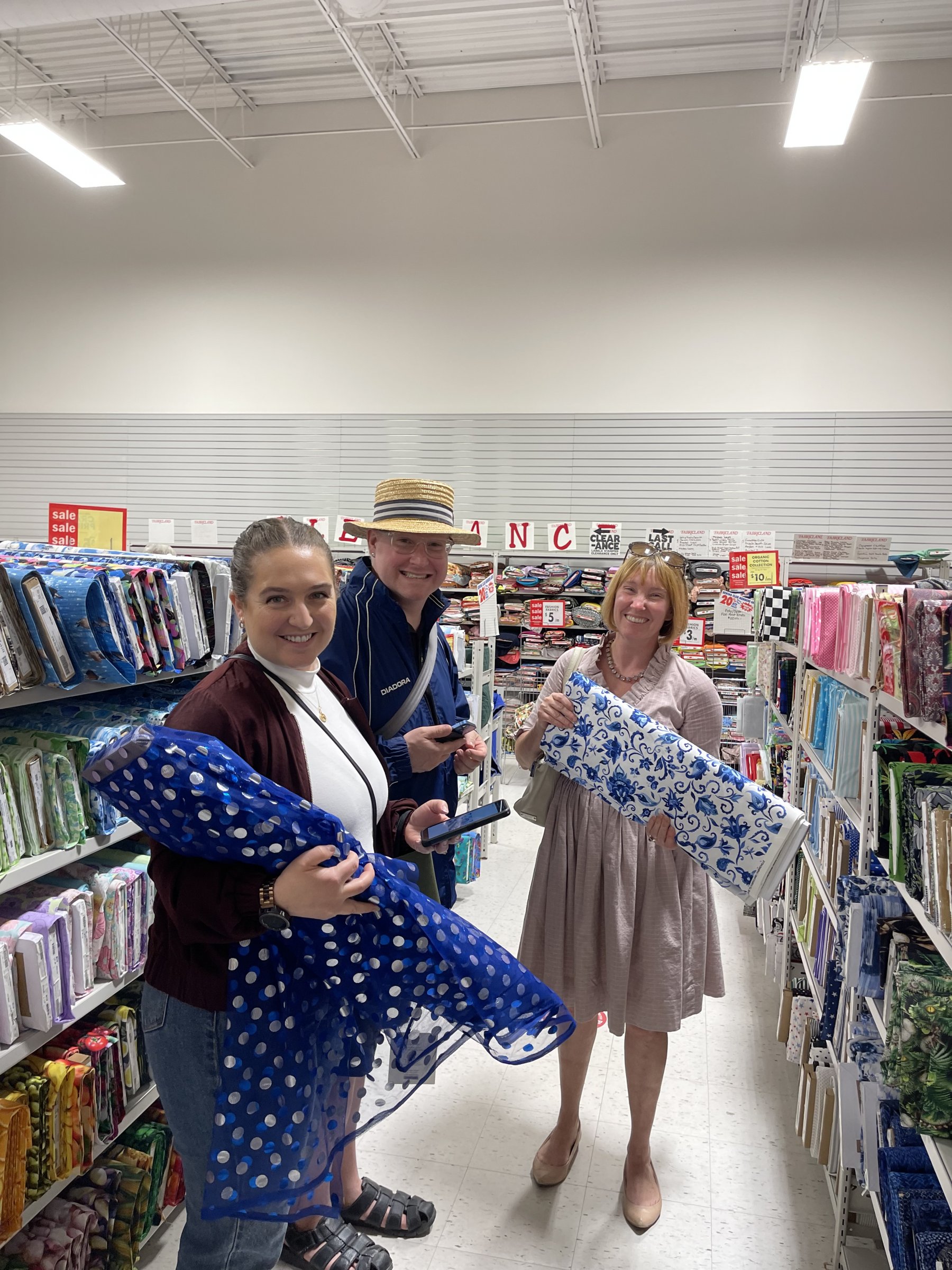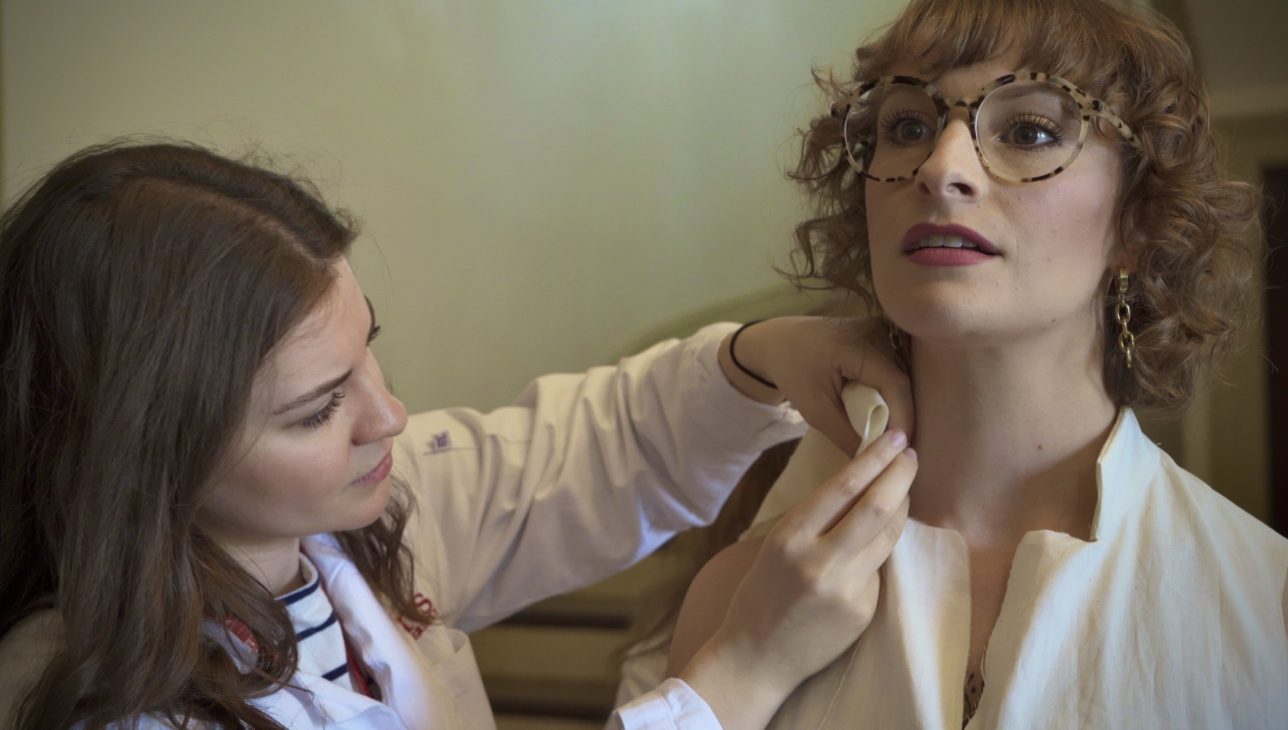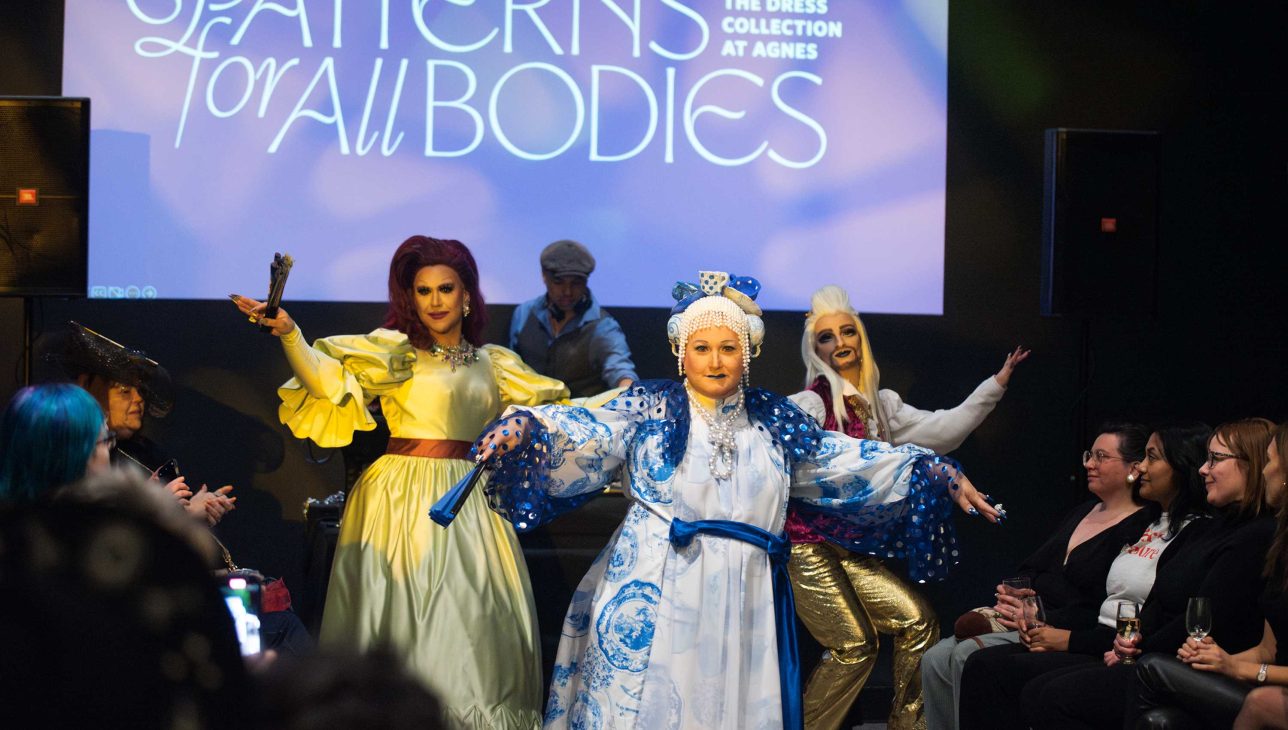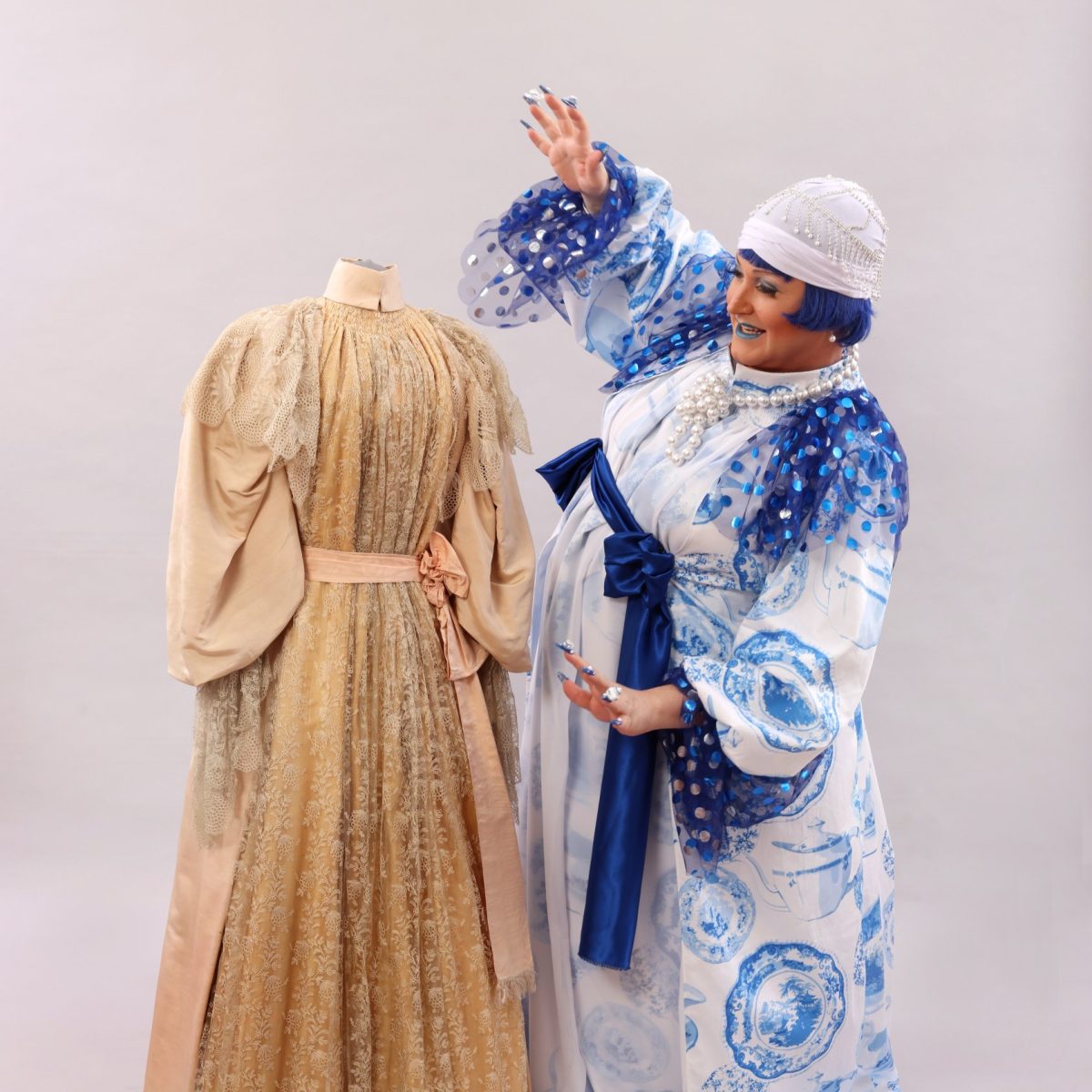
PfAB gathers together all these threads…
Dress is already performative, and the historical Dress Collection itself finds roots in theatrical performance and fashion pageantry. It began as costumes for the Drama department at Queen’s University in the 1940s. As Kingstonians donated heirloom clothing, costumer-turned curator Margaret Angus designated some as museum quality and preserved them in a collection. Over the years, these garments were worn in historical fashion pageants as a form of exhibition. By 1985, that collection fell under the care of Agnes, where we continue to find ways of mindfully growing it, preserving it, and making it accessible.
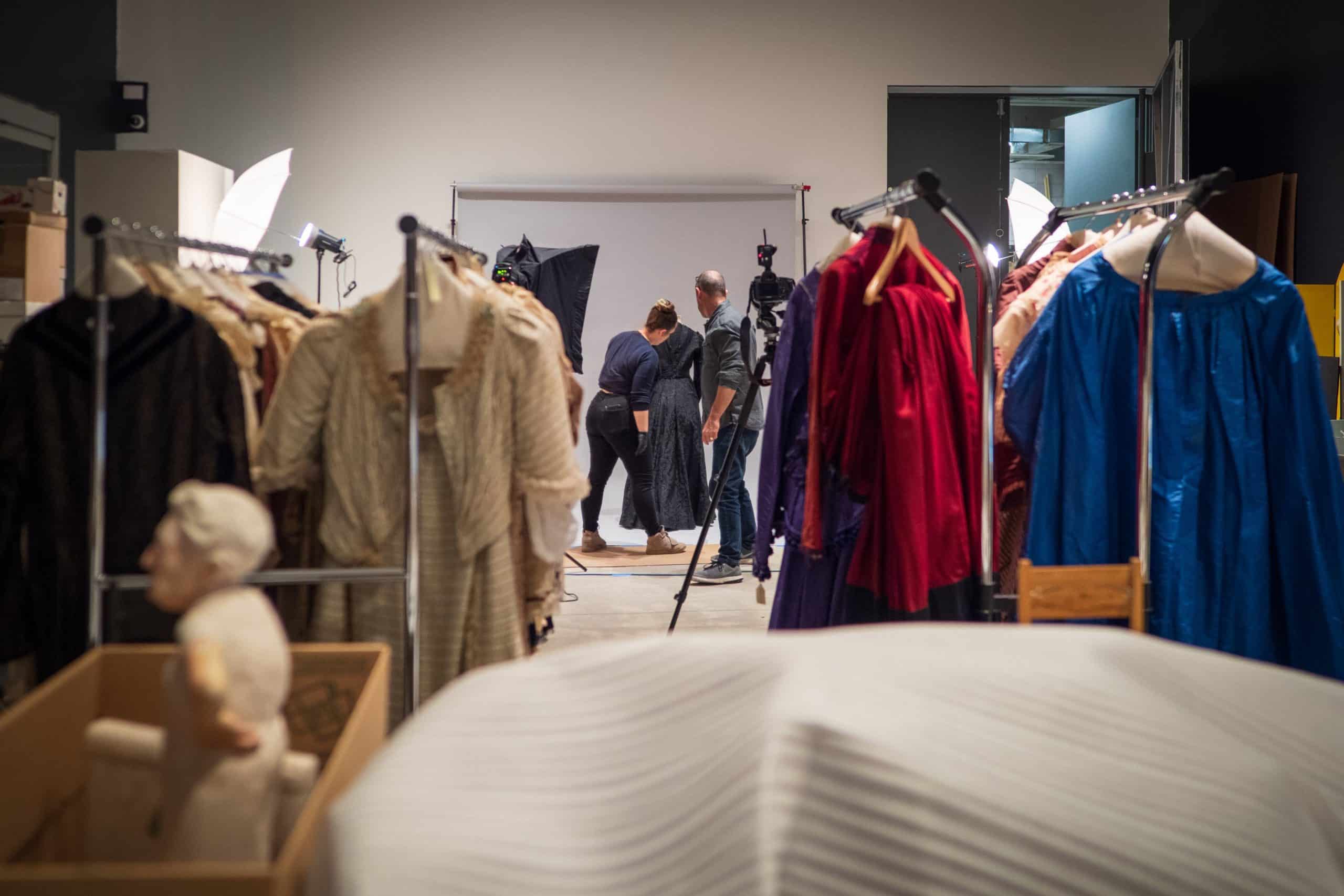
Patterning historical garments, as well as conserving and mounting them for photography or exhibition, can reveal much about them. That intimate work of the conservator, patternmaker, dress historian, curator or museum technician in handling garments—turning garments inside out; smoothing, plumping, tying, buttoning; reconstructing their lines and silhouettes—divulges historical techniques of making and histories of wearing. (Like, ah!, that hidden pocket in the teagown.) These processes honour the work of the original makers, many of whom are no longer known and remain unnamed in collections. The technical informs the historical and re-enacts it.
Historical garments are fragile objects, vulnerable to damage from heat, light, pests, improper storage, handling, display and more. Explore why and how we conserve garments.

With the PfAB pilot, local drag artists Tyffanie Morgan, Rowena Whey and Dare de LaFemme worked with local dress historians, dressmakers and conservators, choosing their own fabrics and embellishments to determine themselves how they would like to wear, accessorize and perform the garments made for them.
Drag has a rich history in Kingston. Jas Morgan (Tyffanie Morgan’s drag mother) organized the city’s first Pride Parade in 1984 and the first drag show later in the decade at the city’s first gay bar, The Office.
Each newly re-patterned garment retains elements of the original such as silhouette and intention, continuing the threads of the garments’ histories. At the same time, each wearer brings their individual creativity to bear on their garment. Dragging them up in their own fabulous way.
Behind every beautiful garment is a system of construction and support. Learn more about the behind-the-scenes, from the toile used to mock up the final product to the undergarments that bolster and uphold the desired silhouette for the wearer.
Help Listening
Play Online
- Use the links on this page to choose which track you would like to listen to
- Press the “Play” button to begin
Listen In-Gallery
- Visit agnes.queensu.ca/digital-agnes
- Select the audio track you would like to listen to and press “Play”
Listening to this content will require a Wi-Fi connection or a data plan.
Some charges may apply, please consult your mobile provider)
Other Ways to Listen
Tap or click on “Transcript” under each track to read or download the full transcript of each audio commentary.

